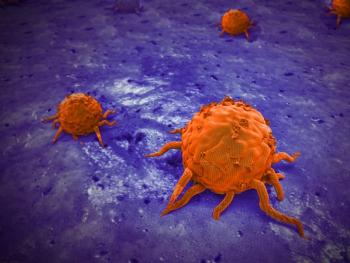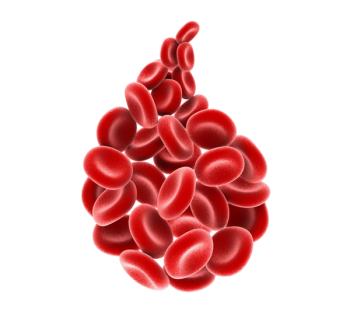
Dostarlimab Yields ‘Transformative Benefit’ In Endometrial Cancer Subgroup
Dostarlimab produces a survival benefit vs placebo in combination with standard of care therapy regardless of whether patients had mismatch repair deficient/microsatellite instability-high disease.
The anti–PD-1 antibody dostarlimab-gxly (Jemperli) plus standard of care carboplatin and paclitaxel outperformed carboplatin and paclitaxel plus placebo in the treatment of patients with advanced or recurrent endometrial cancer, according to newly released findings from the phase 3 ENGOT-EN6-NSGO/GOG-3031/RUBY trial (NCT03981796).
These data come from an assessment of outcomes by blinded independent central review (BICR) and were recently presented at the
Among patients with mismatch repair deficient/microsatellite instability-high (dMMR/MSI-H) disease, progression-free survival (PFS) was longer with dostarlimab than with placebo (hazard ratio [HR], 0.29; 95% CI, 0.158-0.543; P <.0001); the same was true in the overall population (HR, 0.66; 95% CI, 0.517-0.853; P <.0006).
These findings mirror previously released, investigator-assessed outcomes, in which the experimental regimen yielded longer PFS in the dMMR/MSI-H (HR, 0.28; 95% CI, 0.162-0.495; P <.0001) and in the BICR (HR, 0.29; 95% CI, 0.158-0.543; P <.0001).
In the overall population, the PFS in the investigator-assessed analysis was consistent to that of the BICR arm (HR, 0.64; 95% CI, 0.507-0.800; P <.0001; HR, 0.66; 95% CI, 0.517-0.853; P <.0006).
Additionally, according to BICR assessment, the probability of PFS at 24 months with dostarlimab was 66.3% (95% CI, 50.8%-77.9%) and 42.5% (95% CI, 35.2%-49.6%) among the dMMR/MSI-H and overall populations, respectively; the corresponding figures were 26.0% (95% CI, 13.5%-40.5%) and 25.4% (95% CI, 18.9%-32.4%) with placebo.
The overall response rate (ORR) in the dMMR/MSI-H population by BICR was 77.1% (95% CI, 62.7%-88.0%) with dostarlimab vs 63.3% (95% CI, 49.9%-75.4%) with placebo. The complete response rates (CR) were 22.9% vs 13.3% and the partial response rates were 54.2% vs 50.0% with dostarlimab and placebo, respectively.
In the overall population, treatment with dostarlimab vs placebo resulted in ORRs of 68.2% (95% CI, 61.6%-74.2%) vs 59.4% (95% CI, 52.7%-65.8%), complete response rates of 20.6% vs 14.8%, and partial response rates of 47.5% vs 44.5%, respectively.
“Dostarlimab plus carboplatin and paclitaxel demonstrated a statistically significant and clinically meaningful PFS benefit in the overall population, with a substantial and transformative benefit in patients with dMMR/MSI-H tumors,” said presenting author Matthew A. Powell, MD. “PFS results by BICR showed high concordance with PFS by investigator assessment.”
Powell is a professor of obstetrics and gynecology, and chief of the Division of Gynecologic Oncology, at Washington University School of Medicine in St. Louis, Missouri.
A total of 494 patients were randomly assigned to either the combination arm (n = 245) or the placebo arm (n = 249) in the global, double-blind, multicenter RUBY trial. Of the enrolled population, 47.8% had recurrent disease, 18.6% had primary stage III disease, and 33.9% had primary stage IV disease.
Across the treatment arms, the median patient age ranged from 61 to 66 years old. Most patients were White, and a majority had an ECOG performance status of 0.
Patients in the experimental arm received dostarlimab at a dose of 500 mg plus carboplatin at a dose of the area under the curve (AUC) of 5 mg/mL/minute and paclitaxel at a dose of 175 mg/m2 every 3 weeks for a total of 6 cycles. This was followed by maintenance dostarlimab at a dose of 1000 mg every 6 weeks for up to 3 years. Patients in the control arm received the same regimen with a matched placebo instead of dostarlimab.
The primary end points were investigator-assessed PFS per RECIST v1.1 criteria and overall survival. Secondary end points included BICR-assessed PFS, ORR, duration of response (DOR), and disease control rates (DCR) per the same criteria.
Patients must have had primary stage III or IV disease, or first recurrent disease, with a low potential for cure by radiation therapy or surgery alone to be eligible for inclusion in the trial. An ECOG performance status of 0 or 1 and adequate organ function were among the other inclusion criteria.
Among the other secondary end points assessed, the DCR was 91.7% (95% CI, 80.0%-97.7%) in the dostarlimab arm vs 91.7% (95% CI, 81.6%-97.2%) in the placebo arm in the dMMR/MSI-H population, and it was 88.3% (95% CI, 83.4%-92.2%) vs 86.9% (95% CI, 81.8%-91.0%), respectively, in the overall population.
In the overall population, dostarlimab yielded a median DOR of 12.9 months (95% CI, 8.2-not reached [NR]), whereas placebo yielded a median of 6.7 months (95% CI, 5.7-8.3). The median in the dMMR/MSI-H population was NR (95% CI, 13.1-NR) with dostarlimab and 6.9 months (95% CI, 5.5-10.1) with placebo.
Treatment-emergent adverse effects (TEAEs) affected 70.5% of patients treated with dostarlimab vs 59.8% of those treated with placebo, and serious TEAEs affected 37.8% vs 27.6%, respectively. TEAEs leading to discontinuation of dostarlimab vs placebo occurred in 17.4% vs 9.3% of patients, respectively. Two patients (0.8%) treated with the experimental regimen experienced TEAEs related to dostarlimab which led to death.
“Overall, efficacy assessments by both investigators and BICR, along with a manageable safety profile, support a favorable benefit/risk profile for dostarlimab plus carboplatin paclitaxel in patients with primary, advanced or recurrent endometrial cancer,” Powell concluded.
Reference
Powell MA, Hietanen S, Coleman RL, et al. Dostarlimab for primary advanced or recurrent (A/R) endometrial cancer (EC): outcomes by blinded independent central review (BICR) of the RUBY trial (ENGOT-EN6-NSGO/GOG-3031/RUBY). J Clin Oncol. 2023;41(suppl 16):5503.
Newsletter
Stay up to date on recent advances in the multidisciplinary approach to cancer.



















































































